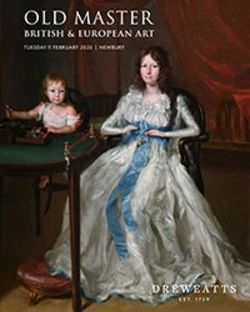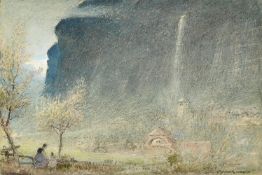You need to be registered and approved to bid at this auction.
Watch the auction
Live
Venue address
Dreweatts
Donnington Priory
Newbury, Berkshire
RG14 2JE
United Kingdom
Old Master, British and European Art
This is a live online auction with auctioneer. For details on registration, bidding, viewing & condition reports, click “Important information” link.
A Collection of Works by George Howard... find out more
Viewing in London (highlights): Dreweatts London, 16-17 Pall Mall, St James’s, London SW1Y 5LU
29 Jan 2025 10:00 - 16:00 GMT
30 Jan 2025 10:00 - 16:00 GMT
31 Jan 2025 10:00 - 16:00 GMT
Viewing in Newbury (full sale): see below
Auction dates
11 Feb 2025 10:30 GMT
Viewing dates
06 Feb 2025 10:00 - 16:00 GMT
07 Feb 2025 10:00 - 16:00 GMT
09 Feb 2025 10:00 - 15:00 GMT
10 Feb 2025 10:00 - 16:00 GMT
|
Auction currency
|
GBP |
|
Buyer's premium
|
26 % (exc. VAT) |
|
Accepted cards for registration
|
|
|
Accepted cards for payment
|
|
|
Other payment methods
|
There are 372 lots within this auction
Estimate
Category
Brand
Item Type
Sale Section
Sorted by
Lot number
Please review and confirm your bid
Confirming your bid is a legally binding obligation to purchase and pay for the lot should your bid be successful.
Please review and confirm your bid
Current bid:
Opening bid:
Your max bid:
Max bid:
Buy it now price:
As your Max bid is at least equal to the Buy it now price, you can immediately purchase the lot.
New bid:
Quantity:
Bidding ends:
Confirming your bid is a legally binding obligation to purchase and pay for the lot should your bid be successful.

































































